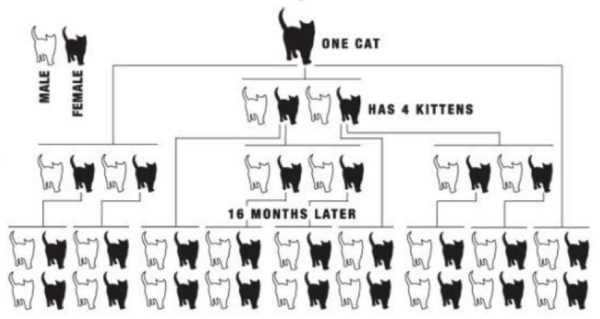
The following bi-weekly column is written and sponsored by Bark + Boarding, which provides a heart-centered and safe environment for your pets. Conveniently located at 5818-C Seminary Road in Bailey’s Crossroads, Bark & Boarding offers doggy daycare, boarding, grooming, walking and training services, plus in-home pet care.
Rae Patterson, Writer and Animal Enthusiast
The team at Bark & Boarding is committed to the well-being of your pet and of pets everywhere. That’s why we want to share some reasons we believe it is important to spay or neuter your animals.
To begin with, let’s answer the question, “Why is it such a big deal anyway?” The main problem humans try to combat by spaying and neutering is overpopulation. And the extent of that problem is quite extraordinary.
- It is estimated that there are nearly 70 million stray dogs and cats living in the U.S.
- Stray (abandoned or feral) animals suffer from unpredictable living conditions, lack of shelter, lack of sufficient food and water and high risk for illness, all due to overpopulation.
- Stray animal overpopulation poses a threat to human welfare: It’s unsanitary, disrupts the natural environment and draws predatory animals like coyotes into populated areas.
- There are an estimated 30-40 million stray (abandoned or feral) cats living in the U.S.
- Approximately 5 million shelter animals are euthanized each year in the U.S.
- At least 80% of those euthanized were healthy and could have been re-homed.
- The estimated amount spent by U.S. humane organizations and animal control organizations combined reaches nearly $3 billion
A lack of commitment to spay and neuter pets is a leading cause in the overpopulation of unwanted animals. Even if your pet is an indoor animal, that doesn’t mean your pet won’t ever slip out. Dogs love to squeeze past your legs or dig under the fence to go for a run, and cats are experts at escape, especially when in heat.
It only takes once for your pet to produce an entire litter of babies. Consider this: A single cat has an average of 3-5 kittens. Don’t think she’s one and done. A cat will breed 2-3 per year if possible. Each of her kittens will be capable of reproducing another 3-5 kittens within 6 months.
Even if your cat only has one litter of 5 kittens, and each of her babies only has (or helps produce) one litter of 5 kittens, that’s 25 new cats that need homes within less than a year, just from your cat’s one-time excursion.
We know you’ll also be wondering spaying or neutering harms your pet. No, the surgery is safe. In fact, spay and neuter procedures provide health benefits for your animals. Females are protected from the common ailments of uterine infections and breast tumors; males are prevented from getting testicular cancer and some prostate problems.
Spaying and neutering can also help keep you and your pet both sane. Females won’t go into heat, a yowling and spraying frenzy that is unlikely to be a happy time for either of you. Males will be less driven to escape, less likely to engage in territorial spraying, and maybe a little less aggressive.
If you’re concerned about the cost of spay and neuter, both the Humane Society of the United States and the ASPCA have databases of low-cost spay and neuter clinics near you. Follow the hyperlinks on each organization title here to find their respective data bases.
Your local vets and rescues (check out one of our favorite partners — Operation Paws for Homes) are also good resources who will be very willing to help you find an affordable option. This is a worthwhile investment that should be considered in the cost of adopting an animal.
In the end we believe it’s about being a responsible pet owner. Spay and neuter benefits your pet, benefits you and it benefits other people and animals all around you. Thank you for considering the impact of how you care for your animal.
Mention this article for a FREE evaluation and click here to sign up for one today.
If you have a question about your pet, feel free to come in, or email [email protected].


